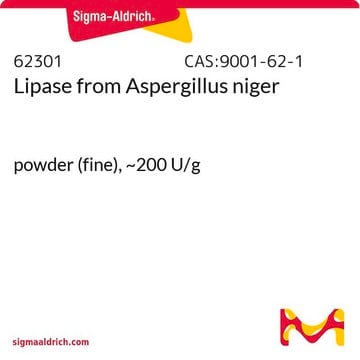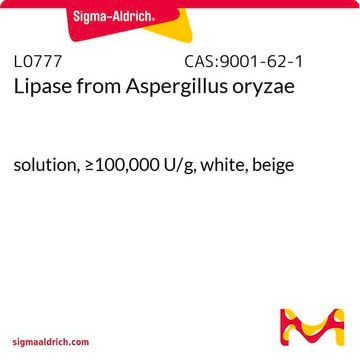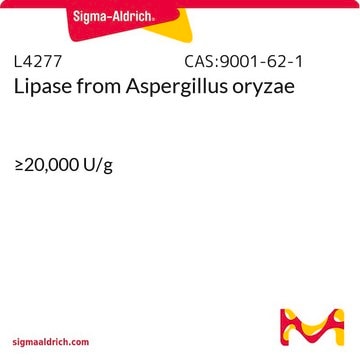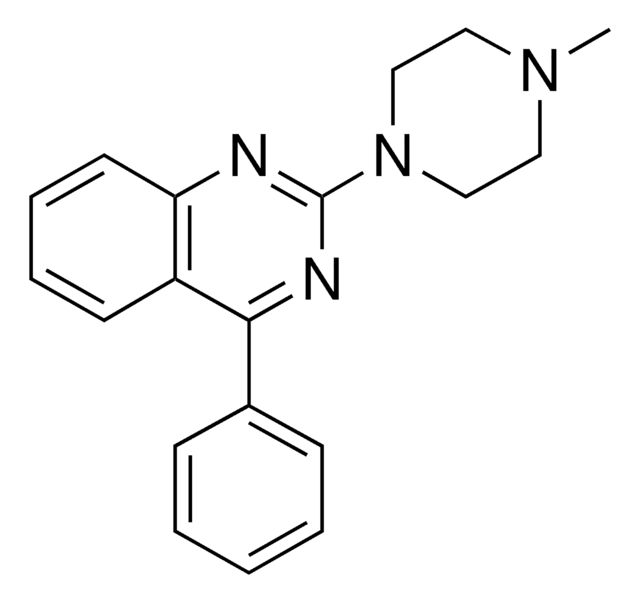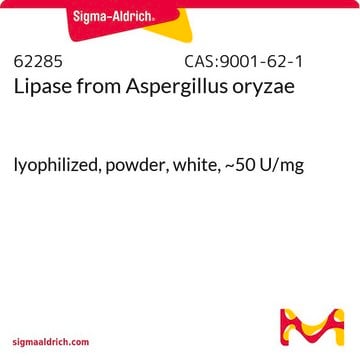L1754
Lipase from Candida rugosa
Type VII, ≥700 unit/mg solid
Synonym(s):
Triacylglycerol acylhydrolase, Triacylglycerol lipase
About This Item
Recommended Products
biological source
fungus (candida rugosa)
type
Type VII
form
lyophilized
specific activity
≥700 unit/mg solid
storage condition
(Tightly closed. Dry)
technique(s)
cell based assay: suitable
color
beige
white
solubility
water: slightly soluble
storage temp.
2-8°C
InChI
1S/C11H9N3O2.Na/c15-8-4-5-9(10(16)7-8)13-14-11-3-1-2-6-12-11;/h1-7,16H,(H,12,14);/q;+1/b13-9-;
InChI key
QWZUIMCIEOCSJF-CHHCPSLASA-N
Looking for similar products? Visit Product Comparison Guide
General description
Lipases are found in pancreatic secretions. This class of enzymes contains α and β hydrolase folds. Candida rugosa produces multiple lipase isoenzymes that have 80% sequence homology.
application
- to synthesize dextran fatty acid esters
- to study the effect of lipase on conjugated linoleic acid (CLA1 and CLA2) production in the presence of sunflower oil and castor oil
- to prepare pH-imprinted enzyme for lipase-catalyzed transesterification of dextran T-40 with vinyl decanoate
Biochem/physiol Actions
Lipases catalyze the hydrolysis of triacylglycerols into glycerol and free fatty acids.
Unit Definition
Related product
antibody
enzyme
signalword
Danger
hcodes
pcodes
Hazard Classifications
Resp. Sens. 1
Storage Class
11 - Combustible Solids
wgk_germany
WGK 1
flash_point_f
Not applicable
flash_point_c
Not applicable
ppe
Eyeshields, Gloves, type N95 (US)
Certificates of Analysis (COA)
Search for Certificates of Analysis (COA) by entering the products Lot/Batch Number. Lot and Batch Numbers can be found on a product’s label following the words ‘Lot’ or ‘Batch’.
Already Own This Product?
Find documentation for the products that you have recently purchased in the Document Library.
Customers Also Viewed
Our team of scientists has experience in all areas of research including Life Science, Material Science, Chemical Synthesis, Chromatography, Analytical and many others.
Contact Technical Service

